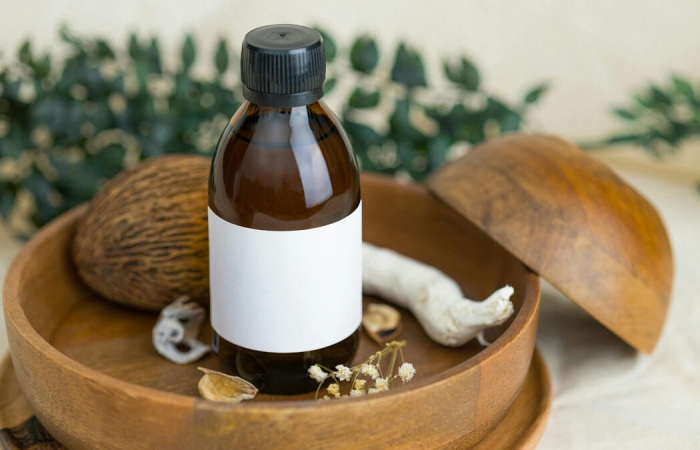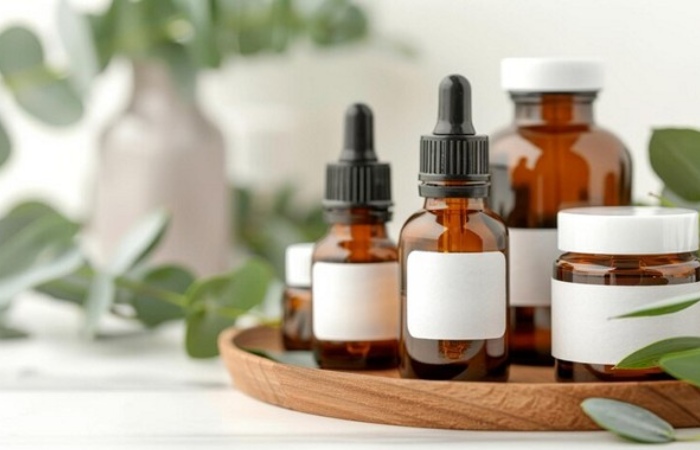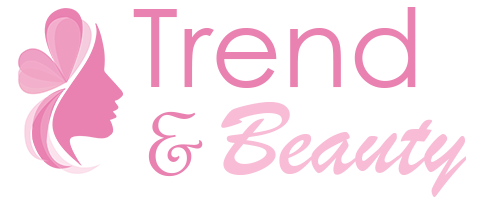Everyone usesc every day and every night. This form of self-care is a great way to feel good. However, as soothing as the products and tools can be, paying attention to what’s going into these formulas is essential. Some beauty products may contain more chemicals than others, damaging your skin in the long run.
As a result, more and more people are turning to natural cosmetics and skincare. Although Cosmetic Labels are considered a safer and cleaner alternative, checking out the full ingredient lists and formula claims is crucial. Some insights can lead you to discover and understand which natural skincare ingredients work for you.
The ingredient list on your product will contain several words. Before translating them and their purpose, you must understand what INCI is!
What is INCI?
The Global Nomenclature of Cosmetic Ingredients (INCI) is a standard for labeling various cosmetic ingredients. The scientific nature of product development involves using multiple ingredients, each of which may be foreign to the average skincare consumer.
The Personal Care Products Council created INCI as a reference for various ingredients. Adopted by numerous cosmetic and personal care product builders, the goal is to have a uniform labeling system for cosmetic ingredients worldwide.
INCI benefits many people in the beauty manufacturing. Cosmetic Labels Dermatologists and scientists will be able to identify the ingredients more accurately. Skincare enthusiasts will also benefit from more information, as it removes the façade of buzzwords in marketing.
For example, a brand has a product that highlights the inclusion of vitamin B3 in its product. However, there are several varieties of vitamin B available on the market. Writing the INCI name, niacinamide, can minimize confusion and limit the ingredient’s benefits.
Another typical example is violet. The INCI for lavender is Lavandula Angustifolia flower oil.
Tip: If you notice that a company does not use INCI for their ingredient lists, you should question the product as it does not follow FDA guidelines.
Hierarchy of Order in Ingredients (Cosmetic Labels)

Another important factor in deciphering natural skin care ingredients is the order in which they are used. The Fair Labeling and Packaging Act requires that ingredients be listed in order of net amounts of the various components. This act provides the basis for compliance with the All Ingredient Labeling System, which requires ingredients to be listed by weight.
The first few fixings are likely the most abundant, while those below have lower concentrations than other elements in the same formula. Consumers can use this order hierarchy when reading a product’s ingredient list.
For example, a skincare line might claim to focus Cosmetic Labels on grape seeds to eliminate sebum. However, you notice that it’s somewhere toward the end of the ingredient list. By following the order hierarchy, you can conclude that the product contains fewer grape seeds than advertised on the market.
Also, don’t be surprised to see essential oils at the end of ingredient lists. They can only safely make up less than 1% of the formulation due to their potency!
Clarifying Marketing Claims
Natural skincare products may have additional labels on the merchandise page and wrapping. For example, our Pro-Age Pro Skincare set has labels such as “gluten-free” and “no artificial colors.” Here is a quick translation of these various marketing claims:
- 100% Natural: Natural skincare may use minimal artificial or synthetic ingredients in the formulation. Manufacturers who claim to be 100% natural use only organic ingredients for their products.
Remember that the term “natural” is controlled by the FDA. Even if a invention claims to be natural, read its ingredients!
- Gluten-free: Because natural skincare products are organic, some formulations, such as wheat and barley, may contain gluten byproducts. Gluten-free cosmetics ensure that the product is safe for people sensitive to gluten.
If you have celiac disease, are tremendously sensitive to gluten, Cosmetic Labels and are concerned about gluten in a product, always contact the company for more information about their sourcing and production methods.
Understand Cosmetic Labels

- Toxin-free: Toxins can be harmful to your skin. For example, products with methylparaben, or other types of parabens are associated with an increased risk of breast cancer and hormonal imbalances.
However, be mindful of what “toxin-free” means, as every company defines what “toxin-free” means. Reread those ingredients!
- No dyes: Some people like to add artificial dyes to their skin care products to change their skin tone, usually to improve their appearance. However, this supplement does not contribute any nutrients to the formula. Some dyes can even hide discoloration from expired foods.
Look for labels that say “no artificial dyes or coloring” on your natural skin care products.
- Fragrance-Free: Some people may be sensitive to synthetic fragrances in skincare products. Fragrance-free products eliminate these hormone-disrupting additives.
- Remember: “natural fragrance” doesn’t always mean safe. Instead, choose products scented with botanical extracts and essential oils so you know exactly what ingredients they contain… and check out our blog on how harmful fragrances are!
- Not Tested on Animals: Some beauty industries test skincare and cosmetics on animals. Products that aren’t tested on animals necessarily avoid animal testing.
- Vegan: Even without challenging on your furry friends, some natural ingredients may come from certain animals, such as beeswax. Certification that a product is vegan means that no animal products were used in its development and production.
Extra Tips for Reading Natural Ingredient Lists (Cosmetic Labels)
Consider U.S. Compliance
Asian beauty products have been booming in the United States lately due to their effectiveness and use of organic ingredients. However, the ingredient list may not follow the order hierarchy that most companies follow.
Beauty art director Odile Monod notes Cosmetic Labels that Korean labeling and ingredient list standards differ from those in the United States. Ingredients used in concentrations below 1% may be ordered. Depending on the retailers where you purchase the product, you may receive a different order on the ingredient list.
Disregard the Length
Some believe shorter skincare ingredient lists are healthier than longer ones since they contain fewer additives. However, some ingredients must be mixed with other ingredients for a longer shelf life. Instead, look at the content rather than the length.
…and vice versa! Longer lists don’t necessarily mean a better product. It all comes down to the ingredients!
Prioritize Your Skin Concerns
Many natural skincare ingredients may seem pretty appealing, but you need to look beyond the trendy ingredient of the month. Pay attention to your skin concerns and determine which ingredients are right for you.
For example, perhaps you struggle with acne. Many people find that tea tree oil is excellent for fighting bacterial acne. In such cases, products like oil-free liquid foundation may be the best way to keep breakouts at bay.
Utilize Ingredient Search Engines
It’s normal not to know what ingredients Cosmetic Labels are included, especially if you’re new to skincare. There are plenty of resources on the internet. There are also devoted ingredient search engines with additional information about the product and its components.
For example, our liquid foundation is made from aloe vera. CosDNA confirms that Aloe Barbadensis leaf sap is present. They also note that it’s a low-risk skin conditioning product. By doing your research, you’ll be able to compare the product’s composition to other options on the market.
Another reserve we like is the EWG SkinDeep cosmetics database.
Always Check the Expiration Date
No matter how good your skincare ingredients are, they become unsafe when they expire. Look at the expiration date to see when you should use them. You can even set a reminder on your calendar. If the formulation goes bad before you finish it, properly arrange of the outstanding product and packaging.


